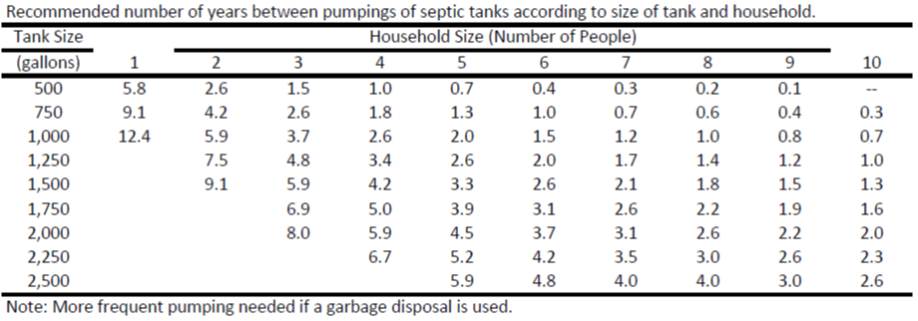Frequently Asked Questions
How does a septic system work?
Below is a general summary of how a conventional septic system functions:
- The septic tank receives water and all other draining from your home from one main drainage pipe.
- The septic tank is a buried, water-tight container typically made of concrete (although fiberglass and polyethylene are options as well). The septic tank holds wastewater until smaller solids form sludge at the bottom of the tank, and large solids such as oil and grease float to the top as scum.
- The liquid wastewater (called effluent) exits the septic tank into the drainfield where it slowly and safely filtered by the soil. The solids in the tank are partly degenerated by bacteria and other natural methods. These bacteria are called anaerobic because they thrive in the absence of free oxygen. This decomposition of sewage under anaerobic conditions is termed “septic.”
How often should my septic system be pumped?
Where is my septic system located?
Modern septic systems will typically have small access lids that are visible above ground. If you are unable to locate your septic system, most counties keep records of building permits, including the installation of septic systems on a particular piece of property. If you recently purchased a property, the home's septic tank map/diagram should be included with the house plans and inspection paperwork. If all else fails, give us a call. We are happy to help you locate your system.
How large is my septic system?
The easiest way to determine the size of your septic system is to refer to any existing documentation that includes the tank's size. If you are able to locate contact information for the system's installer, it is always a good idea to call and get as much information as you can about the system's specifications. If you are unsure of the size of your tank and are unable to locate any documentation, we can provide an accurate estimation with a quick inspection of the property.
How do i know if my system is not functioning properly?
- Water surfacing on the ground
- Toilets, sinks, or tubs not draining properly or backing up
- Gurgling sounds in your plumbing system
- Pump station alarm is going off
- Foul sewage odors inside or outside around the home
Do I need a service maintenance agreement?
Things like the number of people in your home, the amount of water you use, and the type and/or size of septic system you have will all factor into how often your system should be serviced. Repairing or replacing systems can be costly, so we always recommend a Service Maintenance plan to ensure everything is operating as it should. We are able to identify and resolve issues before they become worse, saving you time, money, and the headache.

